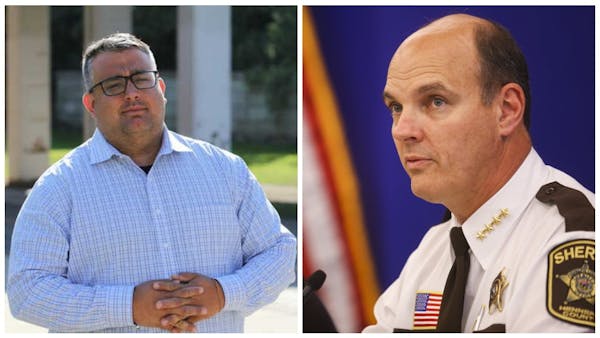Once the state's largest school system, Minneapolis Public Schools has seen its student enrollment erode over time, resulting in fewer state dollars to help pay for operations.
The four candidates running for two open citywide seats on the Minneapolis school board this year share one thing in common: They're convinced the district can reverse its enrollment slide by improving academics, better meeting the needs of students and cracking down on festering inequities.
As the candidates make their final pitch to voters just days before the November election, they see an urgent need to polish the district's image to help grow enrollment.
"We didn't just get here overnight in terms of the exodus of families," said Kimberly Caprini, who is among three challengers — including Sharon El-Amin and Josh Pauly — competing against two-term incumbent Rebecca Gagnon. "We're just in a critical point right now [and] we need to be fiscally smart."
The other open seat is occupied by Board Member Don Samuels, who is not seeking re-election. Also running, though unopposed, in district races are: Jenny Arneson, Siad Ali and Nelson Inz.
The four citywide candidates all agree that some of the designated school program "pathways" have negatively impacted the district by filling up southwest and south neighborhood schools with more students than their buildings can hold. Meanwhile, north and northeast schools are scrambling to attract students to fill their buildings. The problem is that the district has lost its grip on one-third of Minneapolis' school-age children who are choosing education elsewhere, a recent Star Tribune analysis showed. Those students have been going to charter schools and other districts.
Thanks in large part to a dramatic loss of enrollment in the past few years, the district faced a $33 million budget shortfall this school year — the biggest in recent history. And to stabilize the embattled school system, district officials refrained from their long tradition of tapping into reserves, instead making painful cuts in schools and administration. According to district projections, the enrollment decline will continue into the next decade. The district's latest enrollment estimate for the 2018-19 school year is 34,385 students — roughly 1,000 fewer students than the previous school year.
Minneapolis School District leaders said they plan to officially release their current enrollment numbers next week.
Nonetheless, Gagnon said the district is losing far too many students and it must work harder to retain them.
Reasons for leaving
Last school year, district officials began collecting exit surveys from families leaving the district. School discipline approach, transportation issues and the failure to meet parents' needs were the top three reasons why families departed, according to the report.
In July 2017, Minneapolis hired consultant Dennis Cheesebrow to help improve the district's enrollment woes and help develop a districtwide strategic plan. Now the goal is to attract about 6,000 additional students into the district. Superintendent Ed Graff has pointed to a declining birthrate as another factor contributing to the overall loss of enrollment. Cheesebrow has recommended shortening walk zones to improve safety, giving equitable access to programming and creating feasible "pathways" for students from elementary school to high school.
Pauly, a former Minneapolis Public Schools teacher who is making a first bid for office, said "bad governance" is to blame for poor enrollment in the district. He has energized young voters to turn their attention to school board races, arguing that any enrollment growth in Minneapolis will be accelerated by them. He favors tweaking start times and creating a Montessori school that is part of the district on the North Side.
But Gagnon, Caprini and El-Amin say there is an increased urgency to appeal to families on the North Side and in Northeast to get them excited about their neighborhood schools. They also see a great need to improve parent participation in schools to help stem the enrollment decline.
"It would be tremendous to have billboards across the city that have pictures of our graduating classes," Gagnon said. "Our students need to hear positive stories."
Caprini, who has been involved in a group working to bolster academic pathways between schools on the North Side, said door-knocking and bringing back school activities like music and sports is one way to entice families.
But candidates acknowledged some things, such as increased school-choice competition, are out of the district's control. El-Amin, a North Side parent said the existence of charter schools will force Minneapolis Public Schools to become a better district. "We need to be more aggressive with our marketing and our approach to inviting families to Minneapolis," she said.
Also on the ballot this November, the Minneapolis School District is seeking $18 million a year in new operating money from voters. The district, for the first time, also is asking voters to back a $12 million a year technology levy to help offset costs currently covered by the general fund.
Faiza Mahamud • 612-673-4203
Neighbors, city officials at odds over Rochester lake dam

Souhan: This is KAT's chance to prove Flip Saunders was right

The story of Hercules the cat: Rescued in 2022, Target model in 2024

Minnesota State Patrol celebrates diverse new class of troopers

